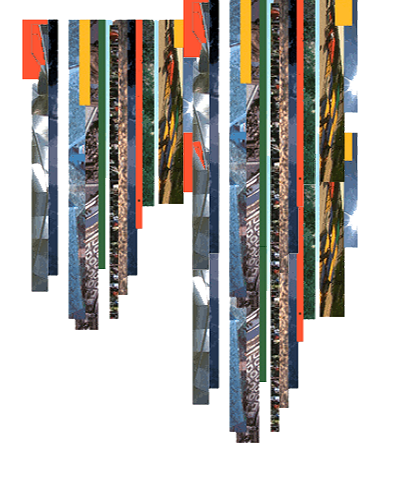
“Today we are dealing with a society based on experience, so objects need to blur experience with form.”
-Karim Rashid, Cairo-born Canadian Industrial Designer
Experience it! Everything is an experience. We learn from experiences. We build memories from experiences. In our life we have good experiences and bad experiences. We have physical and virtual experiences. Experience design addresses the fact that we can learn from past experience (good and bad) and that good experiences are knowable, reproducible, and designable! Experience design is an approach to analyzing, understanding, and conceiving of products, services, environments and events based on a person’s or group of people’s needs, desires, beliefs, knowledge, skills and perceptions. Design of experience intersects and overlaps with interior architecture, landscape architecture, environmental design, product design, information design, information architecture, ethnography, interaction design, service design, storytelling, heuristics and design thinking.
Experience it!
Activity 1 – Experience Detective

“It is not enough to insist upon the necessity of experience, nor even of activity in experience. Everything depends on the quality of the experience that is had…
-John Dewey
Life is full of experiences but most experiences don’t go on forever. Experiences usually have a beginning, middle and an end. The beginning of an attraction is the sensory input or memory trigger that initiates the experience. Most designs work on many levels. Often the viewer, participant, or user isn’t always aware of the different levels: physical, emotional, symbolic, historical, etc. throughout the experience. The middle of the experience is when information is engaged with, responds to, and begins to build knowledge and memory. The end of the experience is when the event or happening is finished. Map a simple, personal, everyday experience that you have such as brushing your teeth, walking your dog, talking on the phone, eating breakfast. First photograph the steps. Label the steps to the experience. Next record what you heard, saw, smelt, felt, tasted and were thinking about during the experience. Now evaluate your experience. Overall, was it valuable? Was it a necessary experience? Did you learn something from it? Would you like to repeat it? How would you like to change this experience?
Experience it! Examine your experience!
Activity 2 – Most Exciting Experience
Often when all of our senses are awake in anticipation, and something happens, we become excited. When we are excited we often feel very alive. What experience can you remember in your life that made you feel a rush of adrenalin, an increase in heart beat, an opening of an emotion?
Activity 3 – Experience is Motivation
We all have experiences. Our experiences are filtered by our emotions and our sense of reason. You might physically experience the same thing as your classmates, but your perceptual experience - what you take in and your memorable experience - what you remember, may differ from your friends around you. This difference in perception is a coloring of your unique personality and series of experiences in your life. As we have experiences some become short term and others become long term. Short term memorable experiences might last a day, a week, even a year before they fade and are difficult to retrieve. Memorable experiences are memories that you can call upon demand and more often than not replay frequently because they fill you with dread, anger, fear or satisfaction, pleasure or affection. Make a visual diagram of an experience. Note the perceptual experience listing information you received. Try to communicate which sense retrieved the most input and which one the least. Next make a different type of diagram that connects the memory that this experience left you and any other memories that this experience linked up with. If it was a positive experience, you will probably seek similar experiences in the future. If it was negative, you will probably avoid similar experiences.
Activity 4 – Alter Everyday Experiences
What can designers do to heighten every day experiences and to make them exciting? Changing the norm into something unexpected or into a new experience can transform how we think about everyday life. An example might be sounds that our appliances make. Rather than bells and beeps and buzzes, we could select the sound to be a harp or a trumpet or other musical instruments. Make some notes about two exciting experiences. Take a few ideas from what made you excited and look around your classroom or home. What everyday experience would you change and how could you make it more exciting?
Review
- Experiences go on forever.
- Experiences can be active (participant) or observant (passive).
- A visual experience involves:
- One point of studying experiences in detail is to:
- Experiences can be physical and digital.
Explore
- Dale Chihuly
- Emotion is Experience
- Ergonomics, henry Dreyfus, PDF
- Experience Design
- Experiences: memorable/repeatable/designable!
- Fuse Project
- FutureLab's Createascape
- Graphic Thought FACILITY
- HOT STUDIO
- Luftwerks Project
- Luminous Field by Luftwerks Video
- Mine-Control: Interactive Installation Artwork
- Pangaea Puzzle
- Sonia Cillari Media - Artist
- So you want to be an interaction designer?
- TEDed Mary's Room A Philosophical Thought Experience
- The Design and Emotion Society
- User Experience Design
- User Experience Design Immersive
Relate
- 21st Century Classroom
- Architecture
- Architecture and Music
- Buildings like Bodies
- Bus Stop
- Cities
- Design Research
- Ergonomics
- House of the Future
- Imagination
- Interiority
- Nature Play
- Organization
- Pavilions
- Place Experience
- Place Exploration
- Placemaking
- Pocket Parks
- Public Space
- Questions
- Senses
- Site Programming
- Space Planning
- Stairs
- Time
- Walking


















































